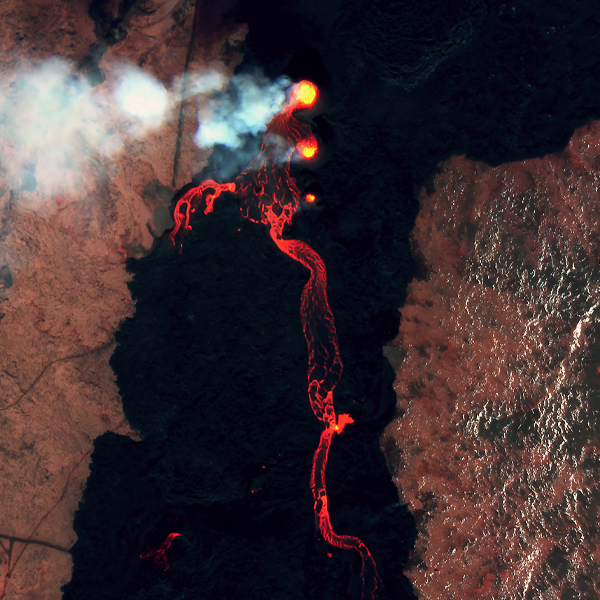
Solar Energy: Using EO Data to Measure the Capacity of Solar Parks
By The Satellogic Team
Earth Observation data can not only help oversee areas equipped with solar panels — it can also help estimate the panel’s energy-per-area capacity with industrial precision, and help the renewable energy sector make decisions based on up-to-date data.
Renewable energies have become increasingly inexpensive over the last ten years, and solar power has been the star performer. From 2009 to 2019, according to an investigation by Our World in Data, solar energy dropped in price by a whopping 89%. Even though Earth Observation (EO) data has traversed a different path in market share and growth, it shares a fundamental trait with solar power: both assets are increasingly accessible. This promising realization comes at pressing times. The International Energy Agency (IEA) set ambitious emissions targets the world needs to achieve in three decades to guarantee a sustainable future. Best known as Net Zero by 2050, the IEA targets require that renewable energies, such as solar power, become increasingly reliable and easy to deploy. Accessible Earth Observation data — and available geospatial insights — might be a fundamental asset to help further develop renewable energy operations and quantify progress.
How? Accessible EO data can enhance clean energy projects, such as solar panel farms, by enabling monitoring energy capacity and maintenance status at scale. Satellite imagery, on its part, is a powerful tool when it comes to identifying a location for solar panel deployment. An expert in solar energy can assess high-resolution imagery to understand if specific terrain could house a solar panel farm, define the potential size of a solar panel deployment, and comply with urban planning best practices.

But EO data is more than a visualization tool. One of the traits of accessible data is its made-to-order frequency. Some satellite constellations, like Satellogic’s growing fleet of low-Earth-satellites, offer high revisit rates for frequent data updates. But satellite imagery and data can also help calculate the capacity of a solar panel surface. Using geospatial software or a set of APIs, managers can analyze an image of a solar panel farm and estimate its PV (photovoltaic) Panel Evolution in terms of area and capacity.
“Satellogic’s high-resolution and high-frequency multispectral data can provide valuable insights for the construction and monitoring of solar parks,” says Michael Frank, Head of Product at Satellogic, of the uses of satellite energy. “By mapping of key features and indicators,” adds Frank, “organizations can drastically improve planning and decision-making for new and existing solar parks.” Thus, a utility could compare the total square meters of a solar panel deployment with the megawatts it produces. It could also determine the evolution of the area adequately covered by panels.
Fast Change Detection methods using multitemporal orthogonal transformations can be used in combination with feature extraction algorithms to map construction progress at solar panel sites. If the project to deploy solar panels was run by a contractor, accessible Earth Observation data might provide an excellent means of ensuring the deployment was compliant with the agreement.

According to the IEA, to reach Net Zero by 2050, the world must install 630 gigawatts (GW) of solar photovoltaics. In terms of deployments, it means we need to install the world’s current largest solar park roughly every day — right now, the 57-square kilometer Bhadla Solar Park in Rajasthan, India. This solar farm is approximately the size of seventeen continuous New York City’s Central Parks. Satellite imagery and Earth Observation data will be an essential tool in planning a solar farm as ambitious as that one — observing terrain and good spots and marking the evolution of its megawatt capacity.

In conclusion, accessible Earth Observation data is not only at reach for giant utilities constructing the world’s largest farms. It’s an affordable, easily approachable asset for any organization working to build or maintain sustainable large energy sites. If in the recent past, the organization in question doubted it could sustain a solar farm project and a customized geospatial program, the reality has changed drastically. Earth Observation data can also help weather other costs or challenges — such as preventing illicit activities, and monitoring the installations’ production capacity, integrity, and human activity within the borders. To reach Net Zero by 2050 organizations can count on accessible Earth Observation data to build, maintain, and measure their sustainable farms, even if they’re a fraction of Bhadla Solar Park’s size might be the answer.
Find out more about applications for Sustainable Operations



